
12 minute read
Fly Fishing on Top of the World

Fly fishermen are constantly breaking new ground in search for the next big adventure. Not long ago - to most fly fishermen at least, Greenland was this huge, white, and obscure island at the top of their world map poster – unchartered territory. It still is to a certain extent. But for a growing number of travellers, it’s the next dream destination.
On every tide, every single day, throughout the short season from July to September, fresh fish will enter the river. Sometimes in small groups, but more often in big schools.
Through gin clear water, you see them moving across the shallow parts of the river. Further upstream, you will find them resting in some of the deeper pools and lies: These heavily built arctic char that have left behind the salty realm out to sea, where they have been gorging themselves on shrimp and fish. Now, they suddenly find themselves immersed in oxygen-rich freshwater, ready for some imminent fishy business that will secure yet another generation of these magnificent creatures.
We have all heard stories of the goodold days: The Newfoundland salmon stocks in the fifties, when Lee Wulff was swinging his dry flies across pools full of fish. The tarpon migration in the Florida Keys that was ten to twenty times bigger than it is today. The Norwegian salmon rivers in their prime, bursting with chrome fish. The list is endless. I was recently on a remote river in Greenland, swinging a fly across a neck that held at least fifty big searun arctic char and, even though the fish weren’t always easy to fool, I felt extremely privileged to be fishing in a part of the world that was still unaffected by man.
Greenland is still – to a large extent, untouched and pristine. Here, yesterday is now!
“That doesn’t look like you” I travel quite a bit and I’m usually very well-prepared. I apply for necessary visas in time, buy foreign currency - if needed, and get the gear sorted out during the weeks leading up to the trip.
My latest trip to Greenland was different: On the morning of my departure, when printing my itinerary and e-ticket, I suddenly realized the flight was departing almost two hours earlier than I thought. Luckily, the traffic wasn’t too bad. My wife drove me to the airport immediately and I made it to the checkin counter just in time.




There I was met by a polite, but slightly amused lady at the check-in counter, who remarked with a smirk: “That doesn’t look like you?!”. Apparently, I had grabbed my daughter’s passport by mistake when rushing out of the house!
I assume, my negligence was down to the fact that I’m Danish. After all, despite the fact that Greenland remains an exotic place to most people, I was taught in school that Greenland was basically just a part of Denmark. Having visited the world’s largest island many times, I now feel completely at home there – and I tend to forget that it’s really a whole different world, far away from home.
Denmark colonized Greenland three centuries ago. While the Danes surely did some serious harm and wrong-doing along the way, the relationship between our two countries might also have helped Greenland’s modest population of 56.000 prepare for modern times. Today, the people of Greenland are free to choose independency from Denmark. But they have yet to do so.
There are still very strong ties between Denmark and Greenland: Danish is still taught in Greenland schools; Greenlanders are free to study in Denmark, and citizens of Denmark and Greenland are allowed to travel between the two countries without a passport. That was my rescue! I was able to produce a driver’s licence as a means of identification – my own this time, and I finally made it (a bit shaky) to the gate.
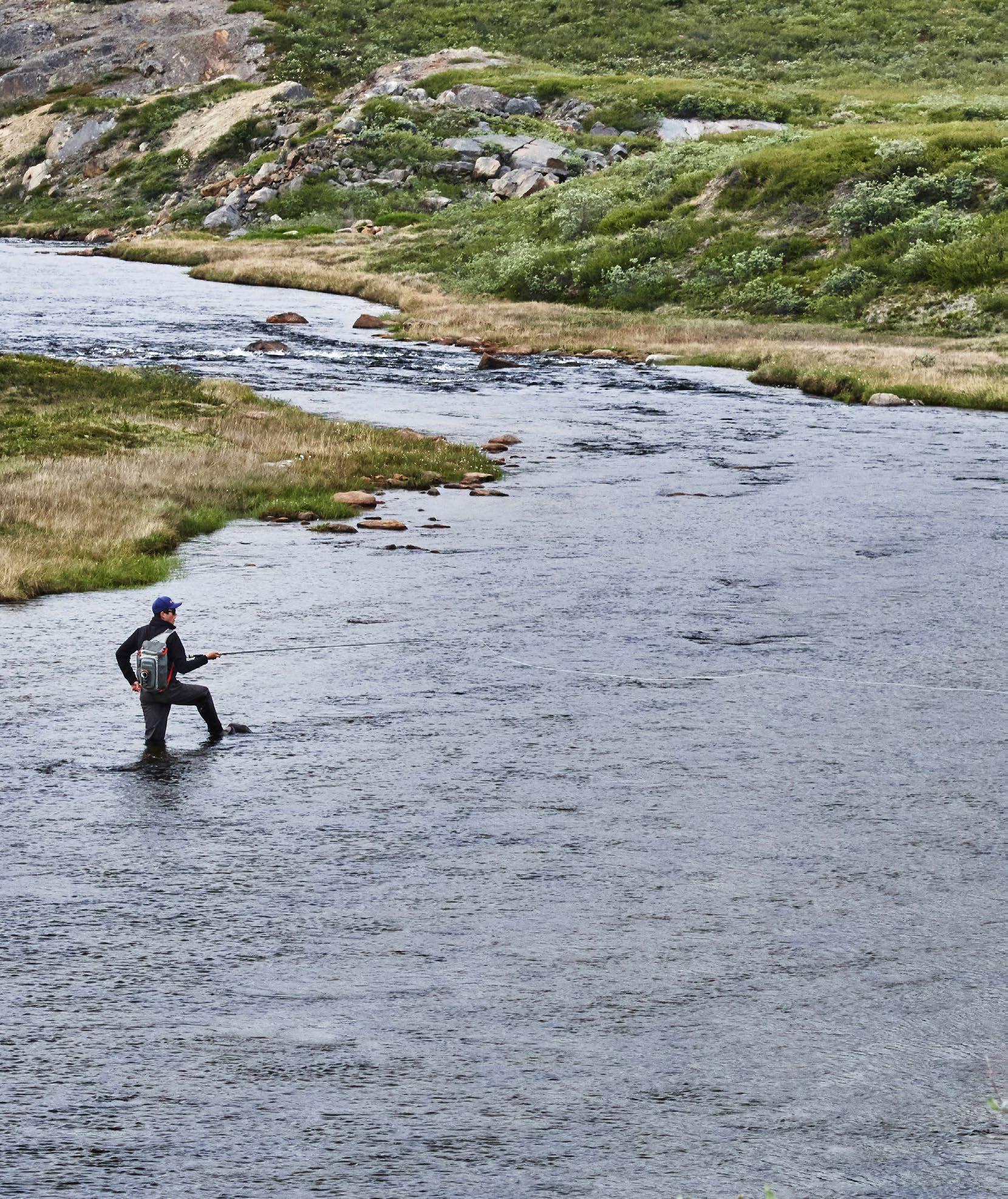

The Cowboy Rig I can’t really think of anything that unites people from all over the world better than fly fishing. During my week at Camp North, the fly fishing guests were from Sweden, Ukraine, Switzerland, Denmark, Germany, and the US. I’m sure there was potential for a good joke there but, instead of trying to come up with one, we just fished, hiked, laughed, ate well, relaxed, finished our beers, wine and booze, and then fished some more.
While the camp manager and his assistants showed most of the guests how to get started, I volunteered to introduce two fly fishermen from southern Sweden to some of my favourite spots. The fishing was kind of slow for Camp North, so I soon ended up tying on my secret weapon: A small- and super light streamer a meter-or-so behind a heavier fly, which is tied Clouser-style in order to fish upside down and avoid foul hooking. This was even more efficient than I remembered it to be and, soon after, I had been into several fresh-run char.

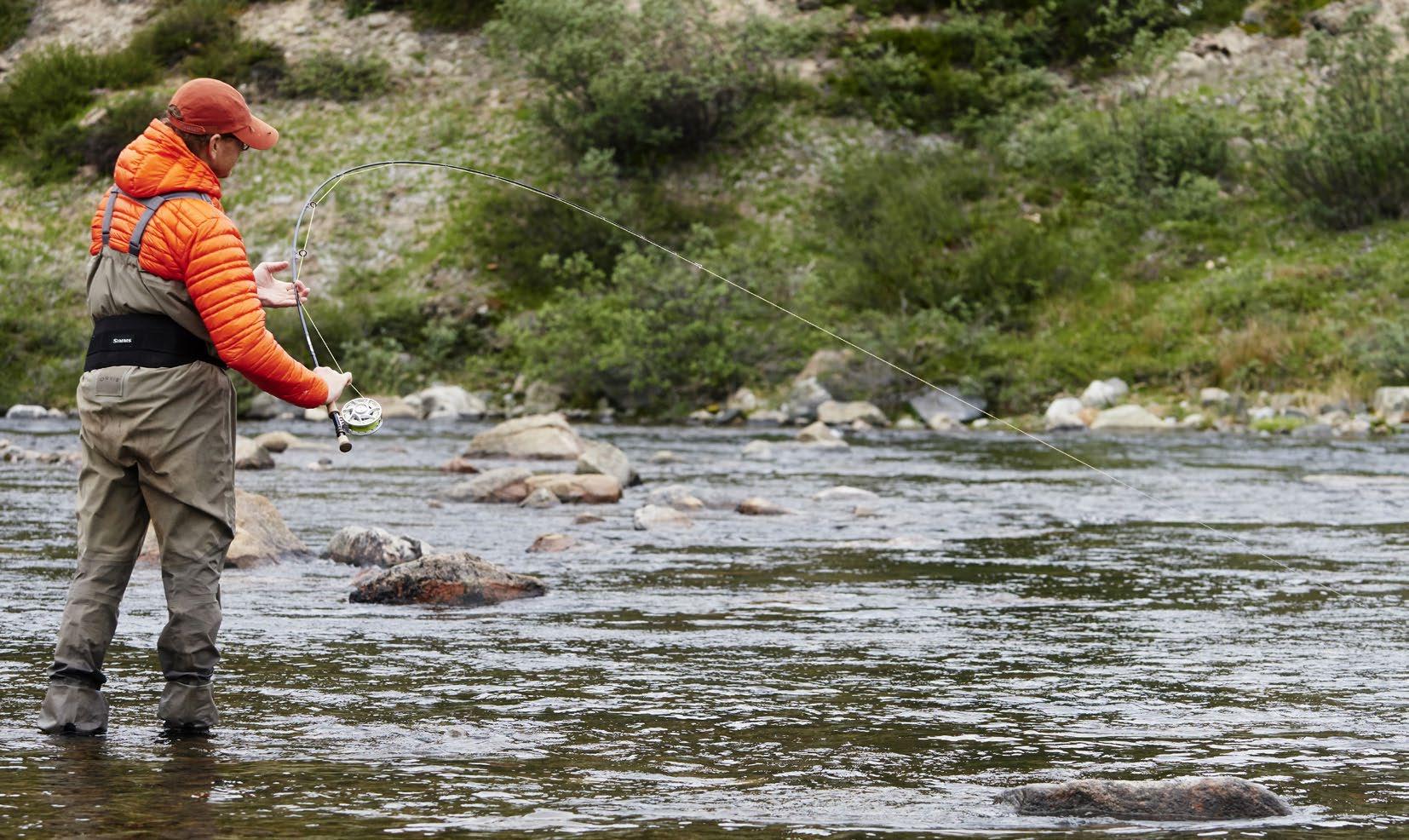
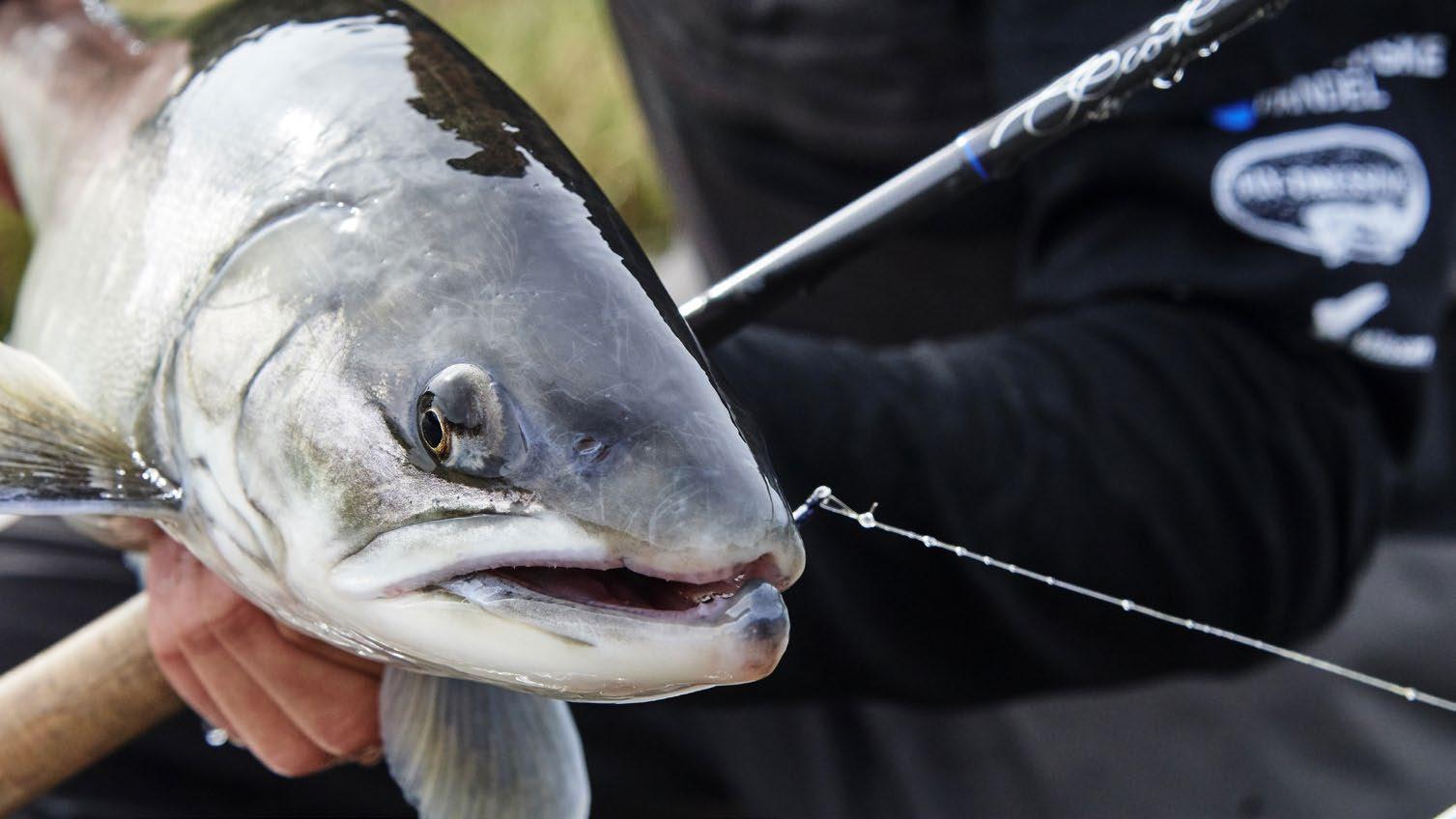

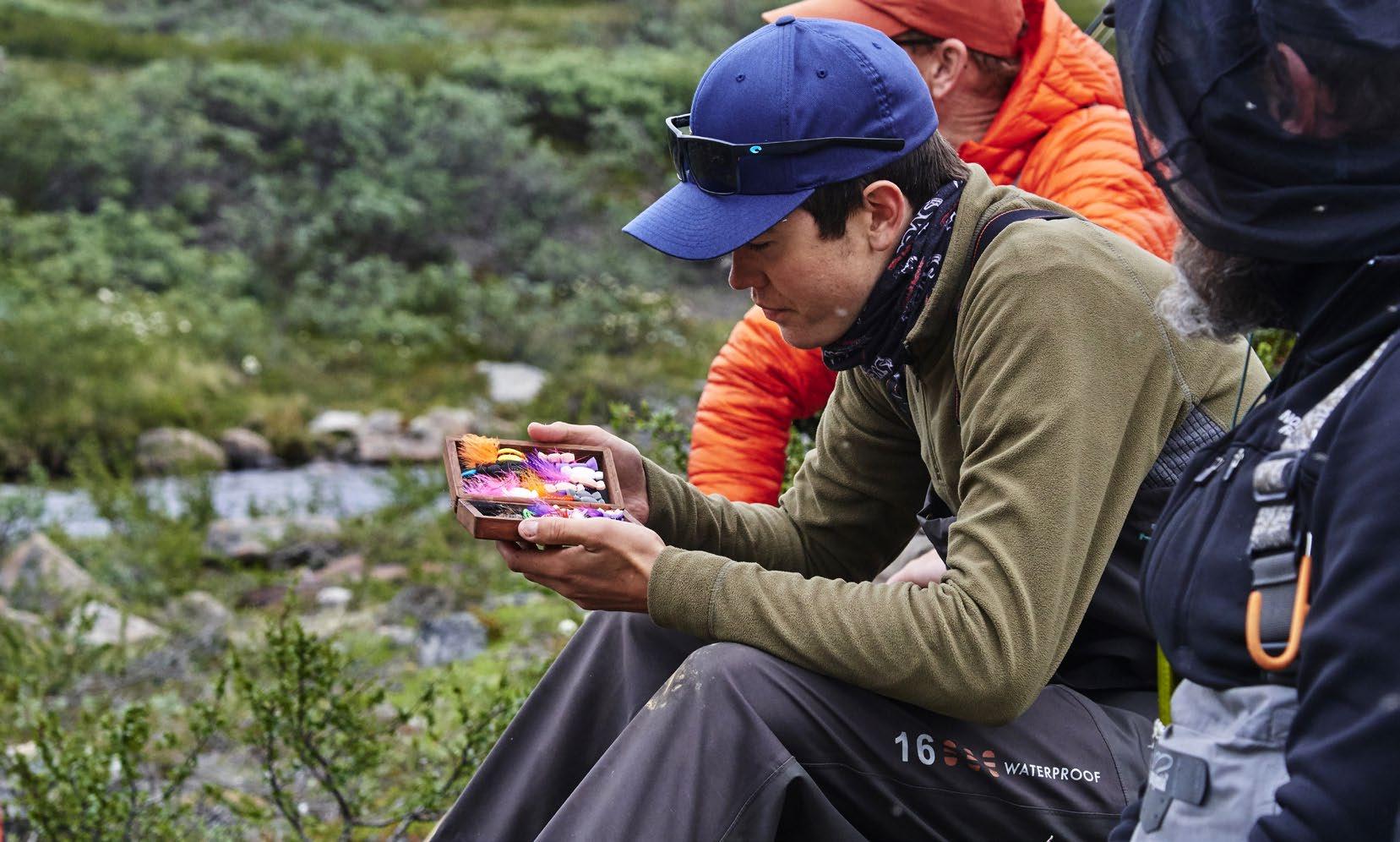


I wasn’t meant to be guiding on this trip, but I simply couldn’t resist the chance of enforcing the impression of me being a true expert. I went a bit downstream, where Uffe was still waiting for the first pull of the trip and got him rigged up. While doing so, I must have mumbled some nonsense about this “being an old cowboy-trick”. I provided a few instructional tips, and soon Uffe was swinging the rig in just the right way. It only took three or four casts, then his line came tight and he was now playing his first Greenland char. A few hard fighting minutes later, when he landed a fresh-run fish straight out of the ocean, his smile said it all. His mate, Hasse, joined us in time to witness the release of the fish. “What did you catch it on?”, were Hasse’s obvious first words. “The Cowboy-Rig!”, Uffe replied casually, as if it was something that every fly fisherman was supposed to know about.
It’s a good thing we got the method christened early on because, during the week, it would prove deadly – especially when the char would take a break from hitting foam flies on the surface, or when they were, otherwise, uncooperative.
One day, we fished the upper river and I introduced the method to Kirill, while explaining how the char often line up against the far bank. I guess, I explained the technique pretty well, but what ensued probably also had something to do with the fact that the place was jam-packed with fish. I left Kirill to try some spots further upstream, and when I came back, a couple of hours later, he was still fishing from the same rock. And still catching fish consistently!
Sportfishing in Greenland Recreational fishing in Greenland didn’t start with catch & release-based fly fishing but with spinning gear and, to a large extent, lots of catch & kill. I still remember a few stories published in Danish fishing magazines more than thirty years ago with pictures of high numbers of moderate-sized arctic char caught on spinners in coloured, glacier-fed rivers. The writers happily posed with ten-, fifteen-, or even more dead fish on the bank.

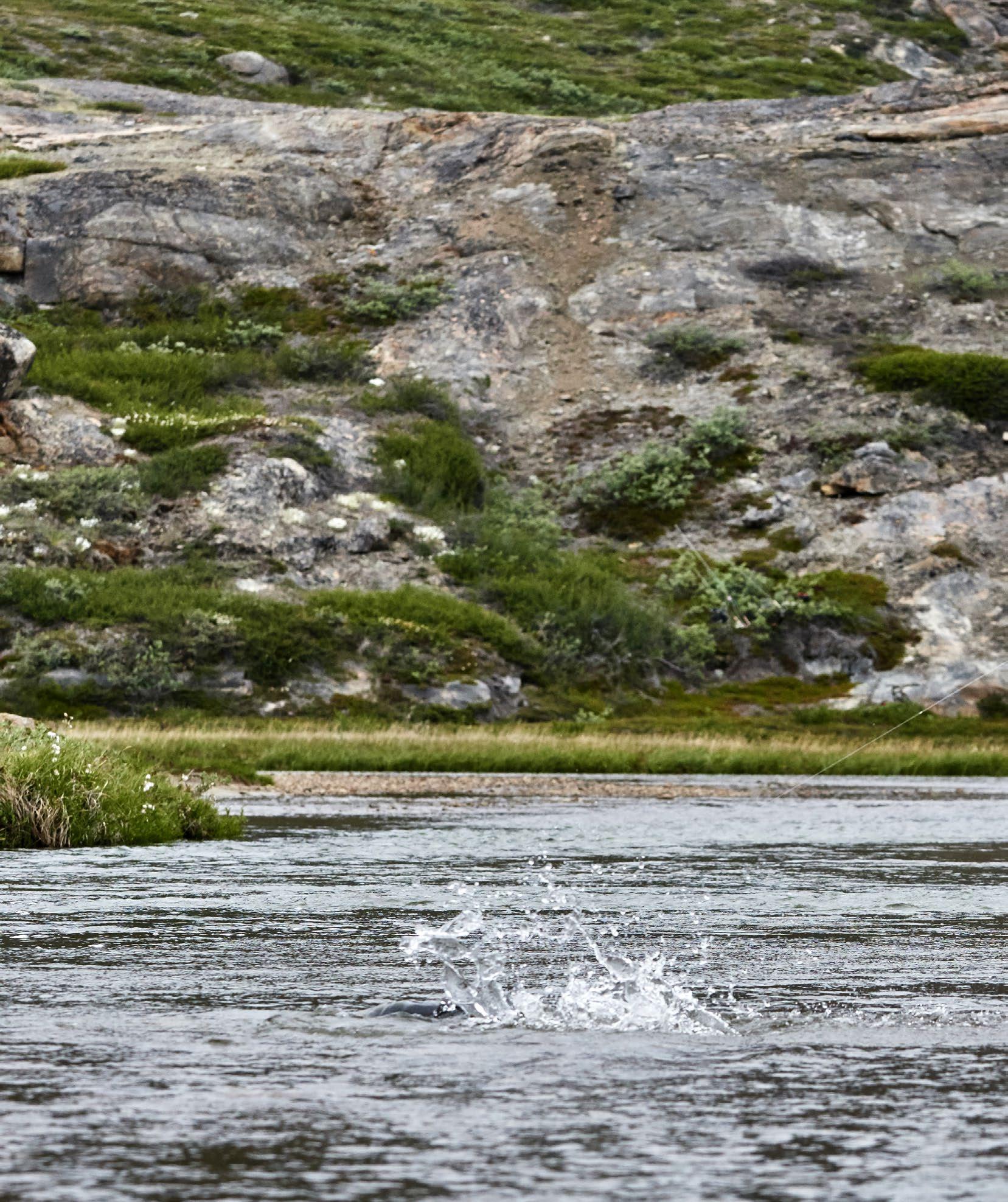

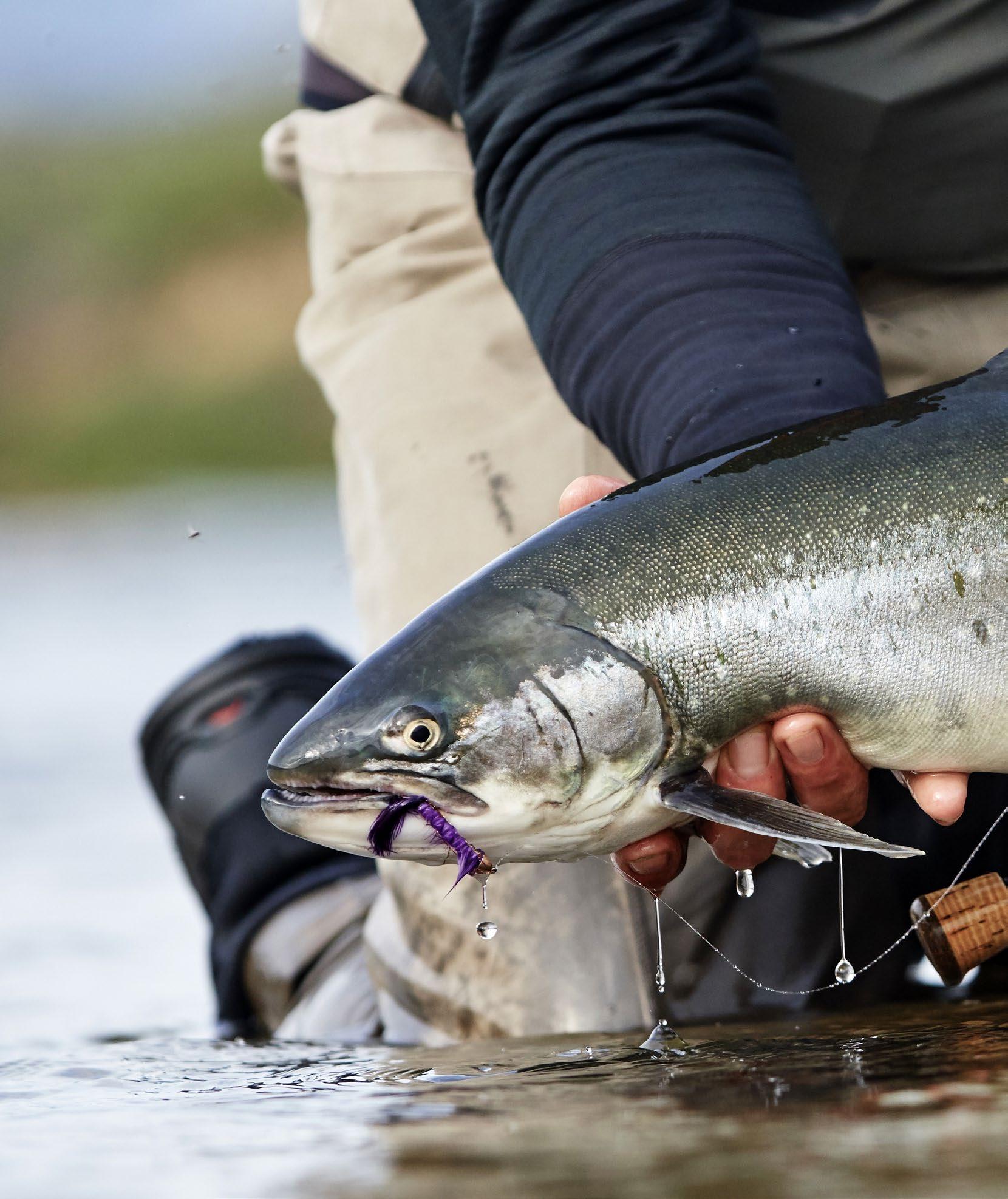
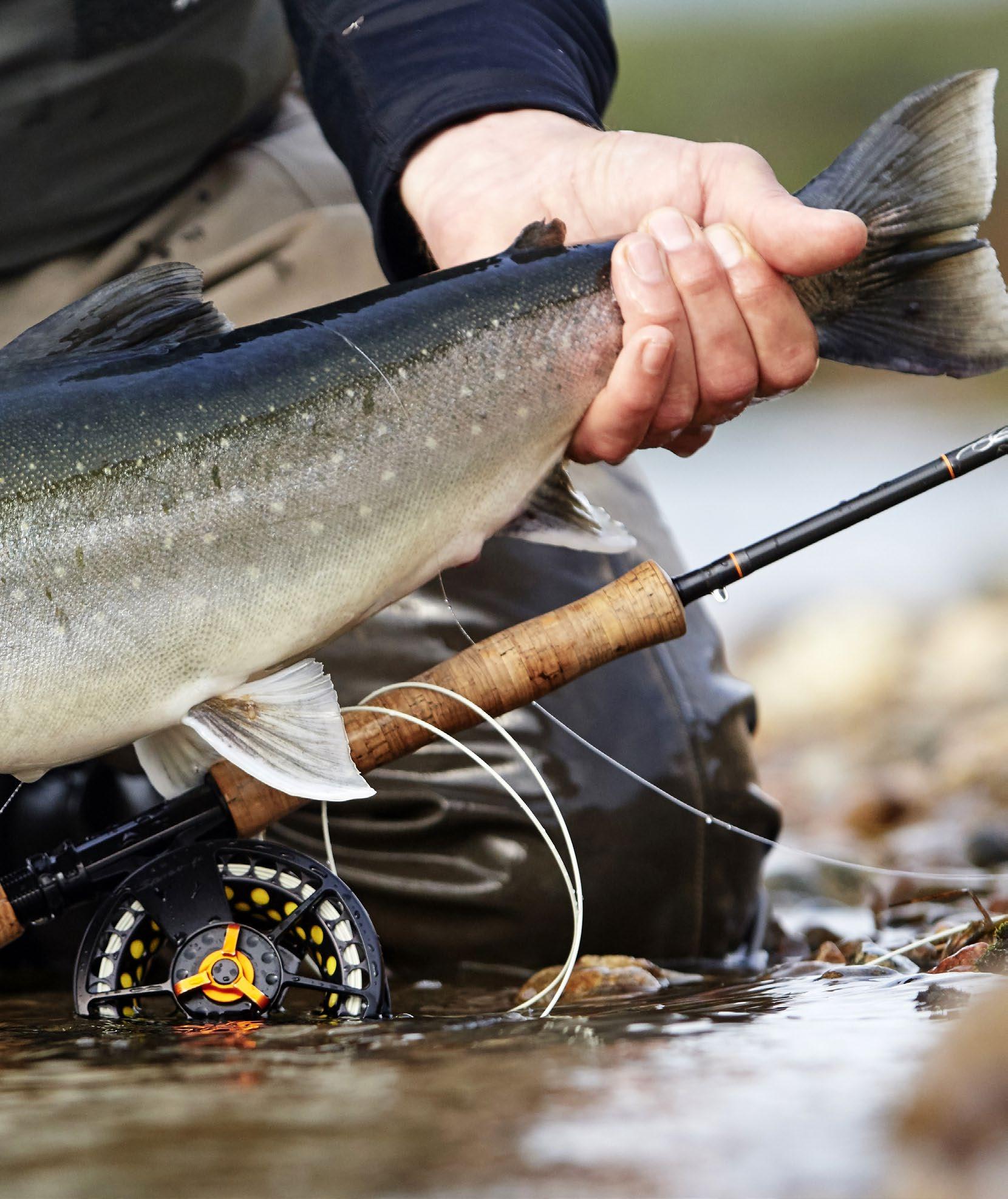

That kind of fishing might have been interesting at the time but as a growing number of trout anglers turned to fly fishing, the numbers game with smaller fish in coloured rivers slowly lost its allure. The infrastructure in Greenland has always been limited. In the past, people would fish the rivers within immediate reach. And the rivers were usually relatively short with only a few pools. The pools, in turn, would oftentimes hold hundreds of fish. Being close to civilization, they had been netted for decades, and – as a result, the average size of the char had been reduced to a couple of pounds.
Fly fishing in Greenland really took off around a decade ago when Getaway Fly Fishing staff members scouted a couple of different rivers north and south of Sisimiut, Greenland’s second biggest city and home to around 5000 people. These rivers were longer and wider, and they ran through lakes that cleared the water. Also, they were remote enough not to be netted, which meant that the average size of the char was much better. The rather euphoric scouts sent back reports of rivers full of char averaging from 55 to 60 cm with plenty of fish topping 70 cm and some passing 80 cm.
Like salmon, arctic char don’t feed in freshwater but their aggressiveness makes up for that. While swinging streamers is always super-effective, we discovered that nothing is more fun than skating big foam flies on the surface. Frequently, the char would wake just behind the flies and chase them halfway across the river before, finally, breaking the surface with their mouths out of the water and engulfing the fly one or two rod length’s away. We had found fly fishing heaven!




Undersold and overhiked The two anglers, that had travelled farthest to fish Camp North this week, were Jeff and Carl from the US. Luckily, the trip met all of their expectations, and then some. In fact, it turned out they had – for the most part – been “undersold”.
At first, I guess, I just saw Carl and Jeff as being really positive and optimistic guys. I was sure they were – they were fly fishermen after all, right?! But at the end of the trip, I had a conversation with Carl that clarified things further:
When a trip is advertised in Europe, most serious agents will try to describe what participants should expect from an average trip (OK, maybe a trip on the good side of average). In the US, however, many agents describe the potential of the fishing and everything else in the most glorious terms, just shy of a potential lawsuit.
No wonder these guys wore happy faces all week. They had probably expected to catch a few nice fish, while being in pure survival-mode most of the time. Instead, they ate well, slept well, found a toilet in camp, and – no pun intended - caught a shitload of fish.
We also had three professors from northern Sweden in camp. This was their second trip to Camp North, so they knew exactly what to expect – but, apparently, two of them, Lars and Bert, thought it was a bit too comfortable and must have felt “underhiked”. So, around mid-week, they packed extra provisions and had one of the camp assistants ferry them across the big lake and fished the wonderful stretches on the upper river. Late in the evening, they crossed over to the side creek (it’s a 15 km hike that no other guests, or guides, have done before), had a short rest, and then fished their way down to the main river, below the lake. When they hit camp, they had clocked 42 km on their GPS!
Greg, the third Swedish professor, was more sensible and preferred not to get “overhiked”, so he enjoyed himself fishing the productive runs on the lower river while his colleagues went exploring.
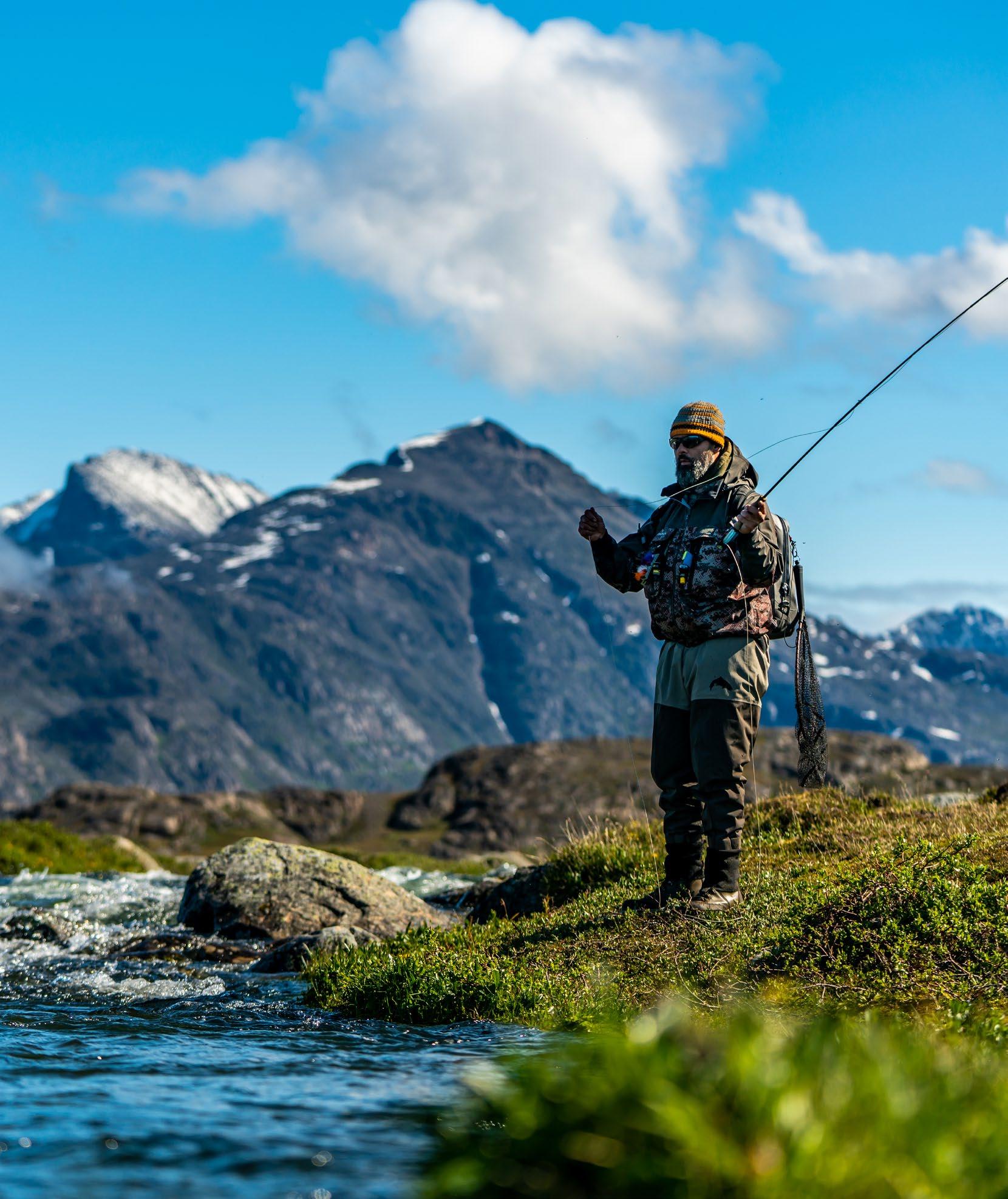
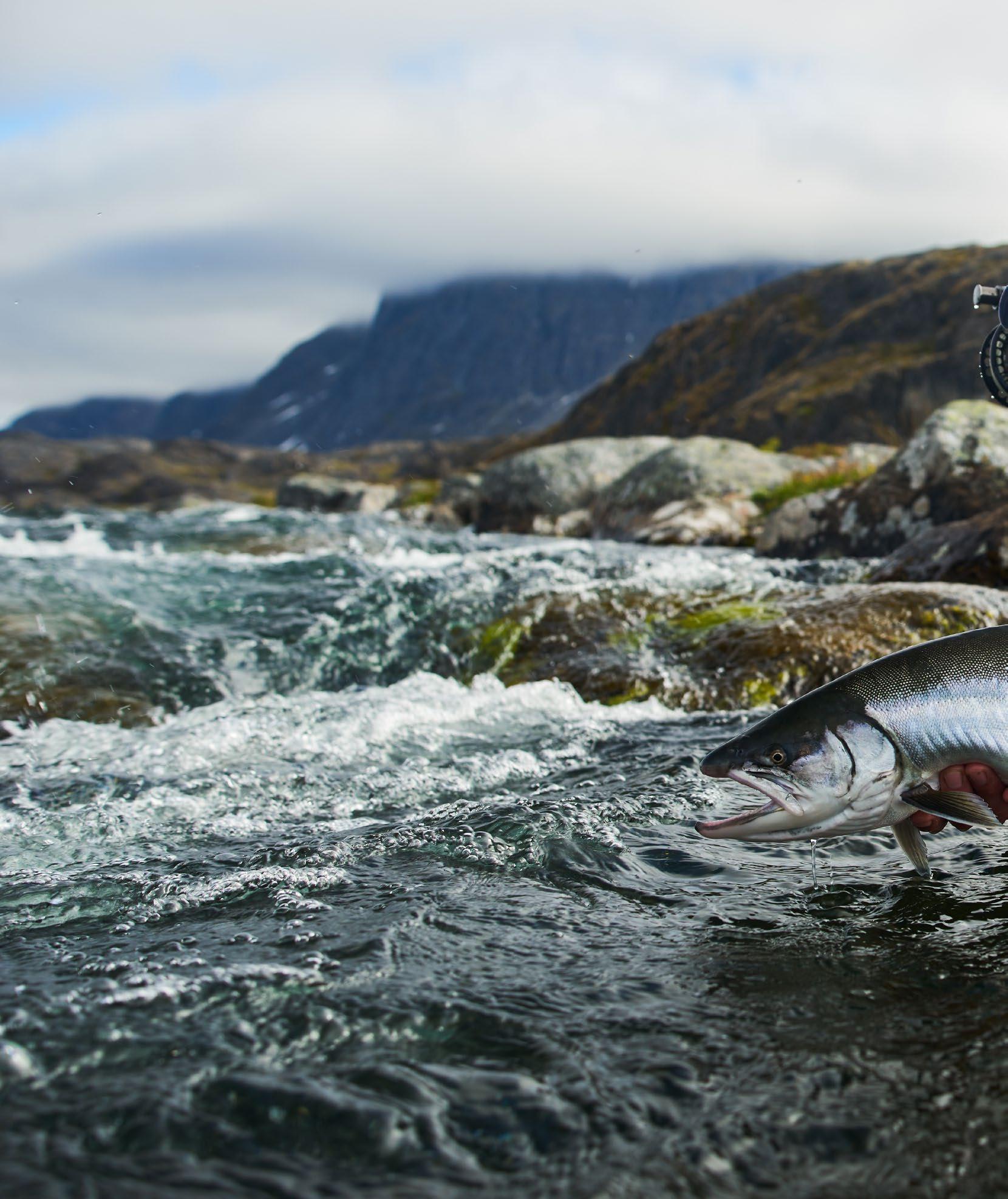
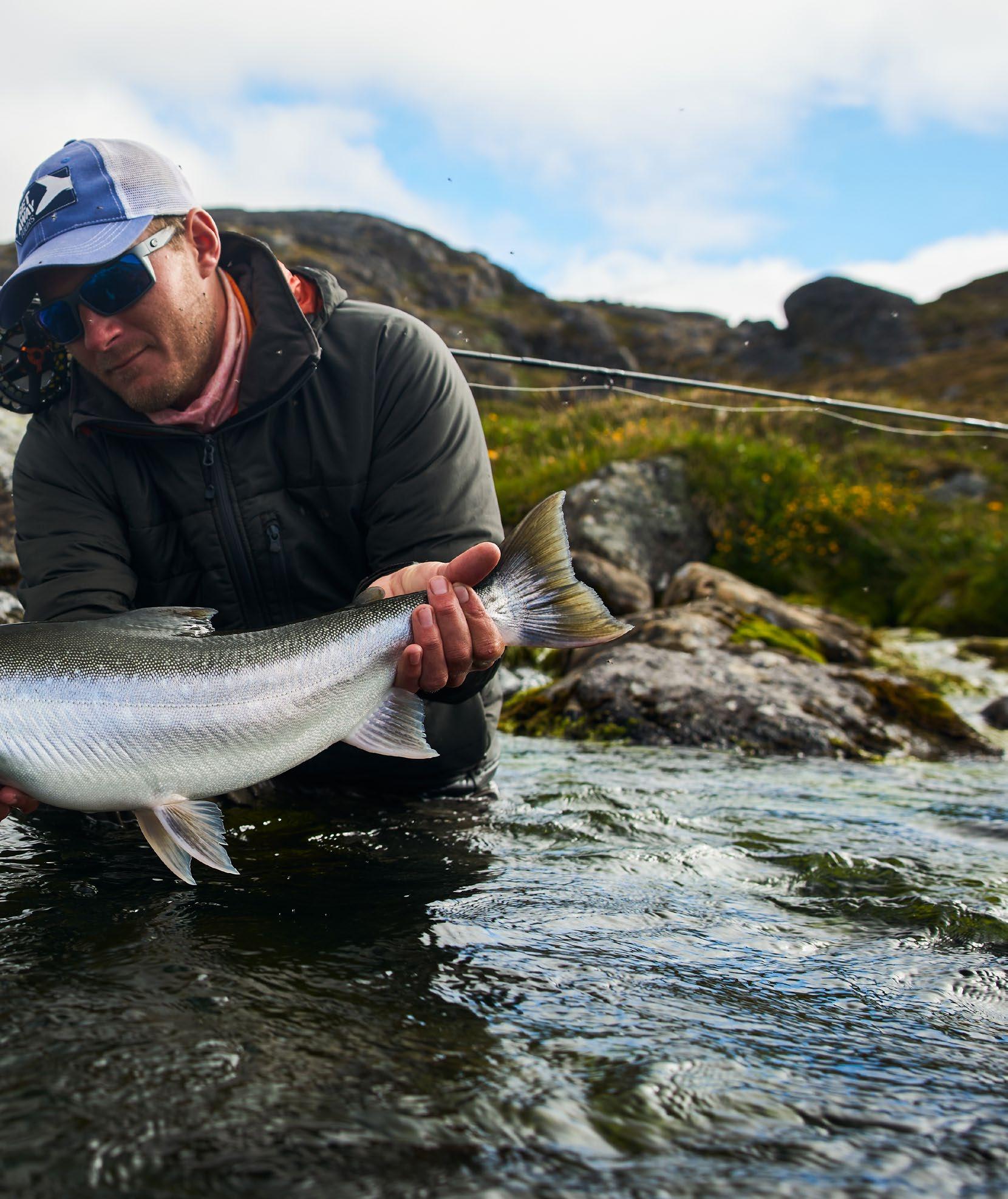

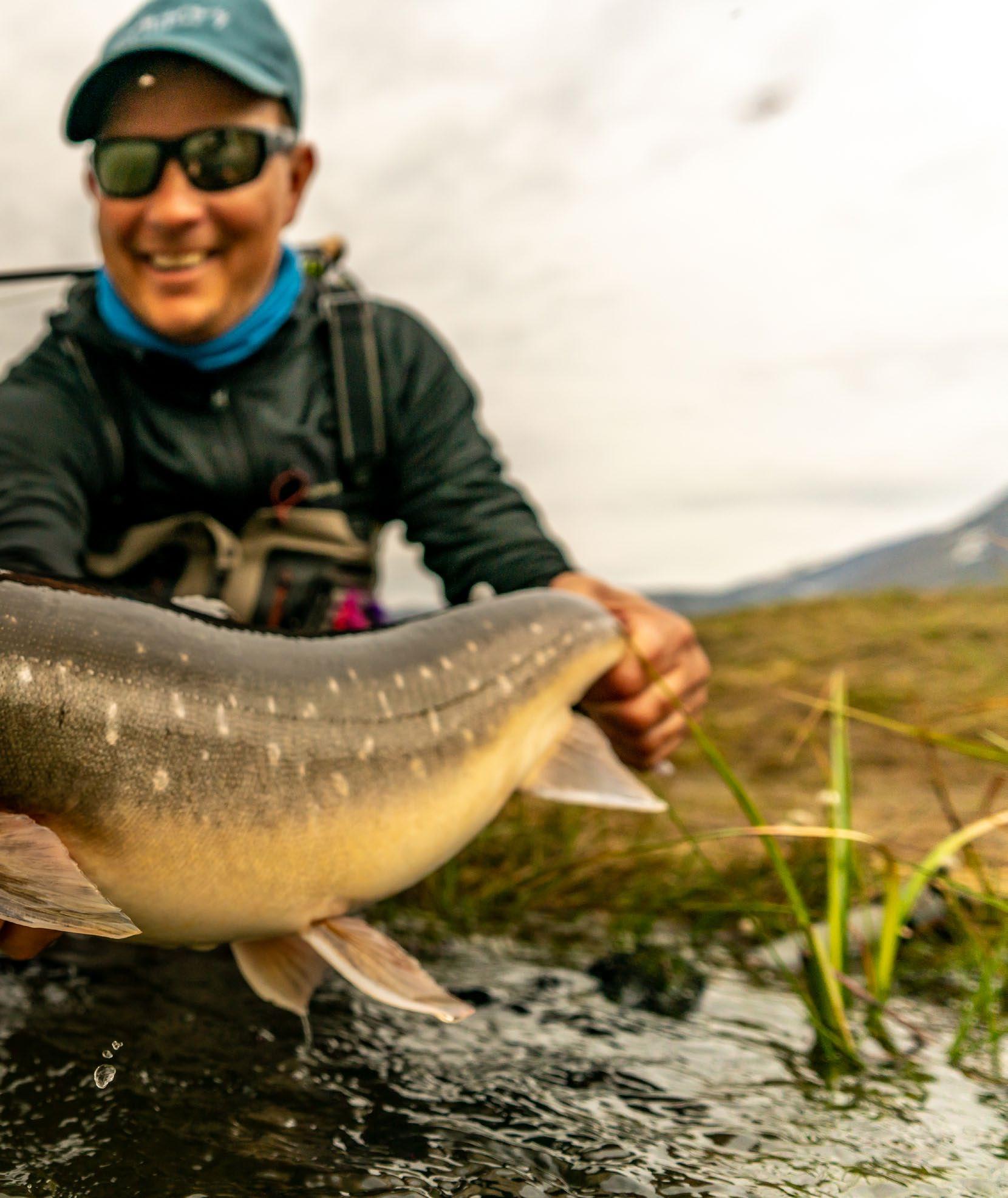
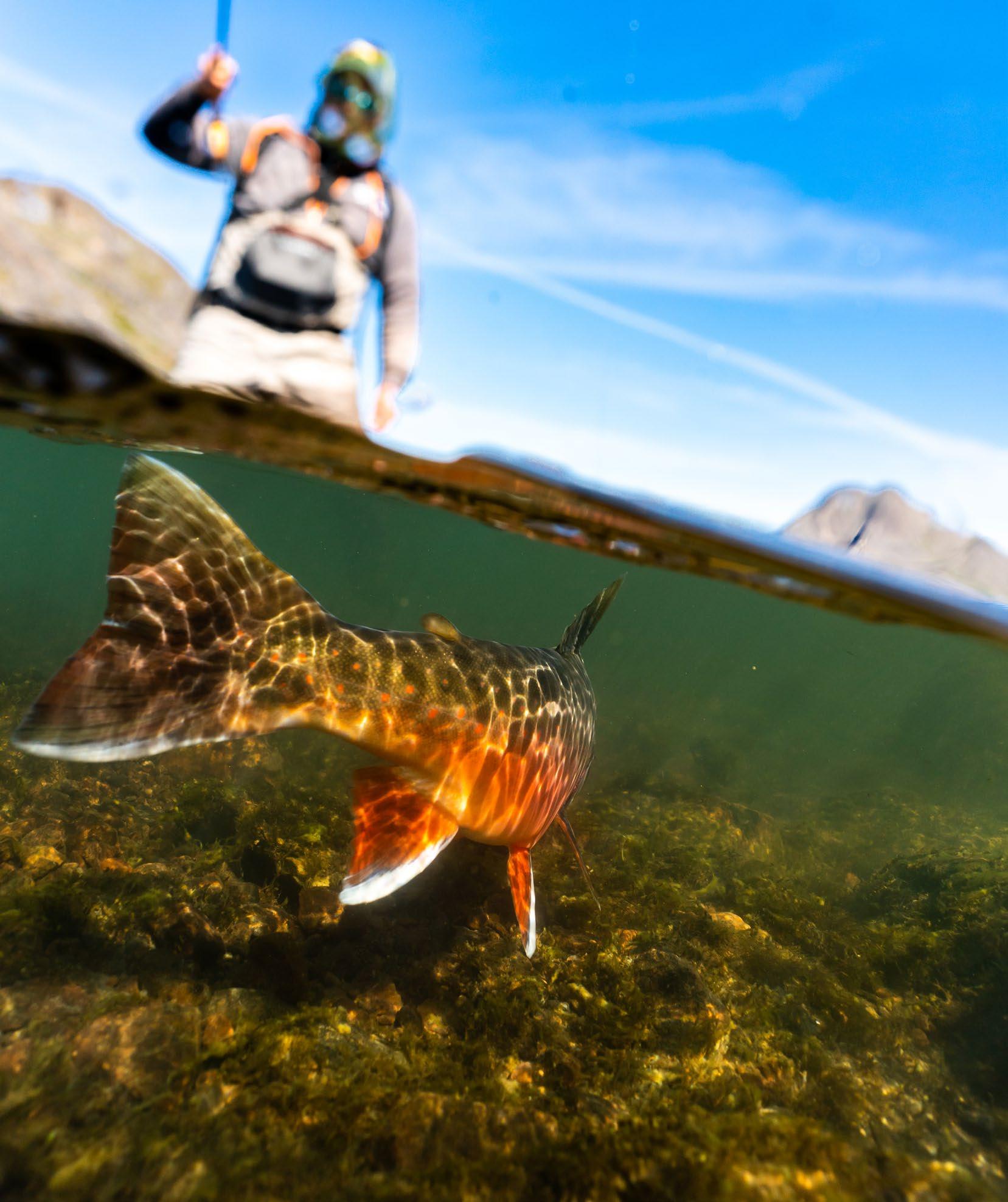
I loved his reason for getting into fly fishing: “Well, the two other guys are my lunch partners, but they are always talking fly fishing. So, I finally realized that I could either find new lunch partners or get into fly fishing myself ”.
An eat to remember Often, one’s best fish of a trip is also the biggest. After all, we’re fishermen, right? But on this particular trip, my most memorable fish wasn’t the biggest.
One morning, around half way into the week, a bunch of us decided to fish the ocean near Camp North’s Eqalugsugssuit river (I assume not naming the camp after the river was pure damage control). It empties into a large fjord, which is perfect for fishing on a rising tide with a traditional Scandinavian approach to coastal fly fishing - or a semi-traditional approach.
I found myself chucking out a big red foam fly, Gurgler style, as far as I could and skating it back across the greenish waters of the fjord with both hands, rod under my arm. A 70 cm char found my fly, when less than a third of the line had been stripped in. Back-out-of-the-water, it followed, and followed, and followed with its nose less than 20 cm from my fly. I tried to speed it up, but I was soon running out of fly line.
Just as the connection between my ten-foot leader and the fly line has passed through the top guide, the char finally decided it was time for the kill.
Only a rod’s length from me, a mouth flared open, the red foam fly was sucked in and the fish turned away in a big swirl.
Standing waist deep in the fjord, somewhere far removed from civilization, as a chrome-bright char charged off with my fly line, I was reminded - not only why fly reels carry backing, but why I got into fly fishing in the first place. I felt on top of the world!
More information about fly fishing Greenland’s greatest rivers:









